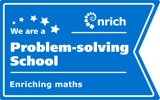Cognitive Acceleration: A Game-Changer for Classroom Learning?

If you were asked to answer the question ‘what is a semicircle’ without using the word ‘circle’, what would you say?
No, seriously, think of an answer. Now that you have, consider these six shapes. Which (if any) are semicircles? Does your answer fit with your original definition?
This is a question I posed to my Second Form set two weeks ago. With answers varying from ‘all’ to ‘none’ and everything in between, it was clear that there were some misconceptions in the room. This was something I definitely would not have picked up if I had dived straight in with and like usual. I have spent the past term researching Cognitive Acceleration (CA) strategies such as this and I am currently conducting an action research project exploring whether a CA intervention has any effect on the mathematical ability of my students.
Background and Evidence
Cognitive Acceleration (sometimes referred to as Let’s Think) is an approach that was created in England by Shayer and built upon along with Adey, and since Adhami, over 30 years ago (Shayer and Adey,1993; Adhami, Johnson & Shayer, 1997). It was originally developed as an intervention in Science teaching, attempting to address the issue of lack of progress without reducing the demands of the curriculum. Since then, it has been adapted for Maths (CAME) and English (LTE). Their original studies have been replicated across multiple countries, and both long- and short-term effects of both achievement and self-regulation have been explored. (Shayer & Adhami, 2010; Eaton & Bell, 2005; Finnau et al, 2016; Olaoye, 2012; Seleznyov et al, 2022)
The results are positive across all three subjects. One quasi-experimental study showed that students who had experienced a two-year CAME intervention in years 7 and 8 went on to achieve, on average, nearly half a grade higher at GCSE, three years after the end of the intervention; Shayer suggests this demonstrates a permanent improvement in cognitive ability (Shayer & Adhami, 2007). CA also approaches come out favourably in Higgins et al’s 2005 meta-analysis of thinking skills approaches (Higgins et al, 2005). Other studies, including those on primary age pupils and those undertaken in other countries were also promising, adding to the efficacy of the intervention. (Adey et al, 2002; Shayer & Adhami, 2010; Eaton & Bell, 2005; Finnau et al, 2016; Olaoye, 2012; Seleznyov et al, 2022)
Whilst the research began 30 years ago (coincidentally with St Albans as an intervention school in one of the original studies; Shayer, 2024), effects have been reproduced and published as recently as 2022 (Seleznyov, 2022). As Seleznyov (2022) mentions, CA has once again become relevant since the government supported a mastery approach to mathematics learning (Boyd, 2020). The EEF also highlighted CAME as a ‘particularly promising’ thinking skills intervention in their 2018 Evidence Review for Improving Mathematics at KS2 and KS3, which has contributed to the renewed interest in recent years (Hodgen et al, 2018).
(Adhami & Shayer, 2007)
Pedagogical Theory
CA lessons are constructivist in nature and are designed to harness Vygotsky’s (1980) concept of a Zone of Proximal Development (ZPD) to accelerate students through Piaget’s stages of cognitive development (sometimes referred to as schema) (Adhami et al, 1998; Shayer, 2003). This aligns with relatively recent evidence that Piagetian teaching approaches impact positively on learning (Hattie, 2012). The idea is to accelerate as many students as possible from ‘concrete operational’ thinking to ‘formal operational’ thinking. Often this happens between twelve and sixteen, but the CAME programme aims to use specifically designed intervention lessons to accelerate students across these stages by age fourteen, in time to impact GCSEs (Adhami & Shayer, 2007).
(Adhami & Shayer, 2007)
What Does it Look Like in Practice?
Lessons are split into two to three episodes, each of which comprises of three stages:
- Concrete Preparation
- Social Construction
- Metacognition.
Concrete preparation introduces the puzzle or problem to be solved, embracing a low ceiling, high threshold approach (McClure, Woodham, and Borthwick, 2011). Students discuss (with teacher guidance) the possible approaches and the boundaries of the task.
Students then embark upon a fast and furious Social Construction phase, where they work in small groups or pairs to complete a pre-designed set of challenging tasks. Everyone knows that anyone may be called upon to share in the final metacognitive stage, so the emphasis is on pacey collaborative struggle and the sharing of strategies, aligning (as Seleznyov 2022 notes) with Bjork and Bjork’s (2011) concept of desirable difficulties.
Finally, everyone participates in a Metacognition phase, which takes the form of a teacher-led group discussion. Students need to see ‘successful performances’ from other pupils, using these to fill their own ZPD. There is then active discussion on the problem-solving techniques used, what was successful and why. These three phases are repeated at least once more within the lesson, each time focussing on more challenging content. (You can find an example of a CAME lesson plan here.)
My Research
I am conducting a one-term CA intervention, weaving 9 pre-published CAME lessons into our Second Form Scheme of Work over the course of the Spring Term, in the attempt to answer the following research question: “What effect does a one-term cognitive acceleration intervention have on attainment in Mathematics of streamed lower-ability Second Form boys in a selective school environment?”
Pupils are seated in tables of four, sitting in a pre-defined seating plan according to ability: bottom with middle, and middle with top, per Adhami and Shayer’s (2007) recommendation. The entire Second Form took the pre-test used in a Finau et al’s 2016 Tongan CAME study, and they will all sit the post-test after Easter. My group have also complete an adapted version of the Students’ Adaptive Learning Engagement (SALE) questionnaire looking at students’ motivation and self-regulation (Velayutham et al, 2011).
Pupils are seated in tables of four
I have only delivered two of the nine CAME intervention lessons so far, but my initial thoughts are positive. I have really enjoyed changing the seating arrangement in M7 (thank you for humouring me Maths Department!), and I have even noticed a ‘buzzier’ atmosphere with other year groups in that room. Students are talking to each other about maths all the time, collaborating and sharing ideas. They’re finding it challenging and really having to think, which is exactly what will lead to progress in the long run.
Anecdotally, my Second Form picked up my next, ‘standard’ lesson on circles with greater ease than I have seen in previous years. Our CAME exploration of plotting relationships between area, circumference and radius seemed to have worked, and they could remember which circle formula was which – a problem I have often been frustrated by in the past. See the bottom of this post for an example of a CAME lesson plan.
I have also (to my genuine surprise) found engaging with the research really interesting. As a mathematician, I was never required to write extensively for my degree, and I completed my PGCE alongside teaching a full suite of classes here at St Albans School. The prospect of completing a research project was daunting, but I found the scaffolded Staff Research Booklet a useful resource, enabling me to conduct an action research project in a user-friendly step-by-step way. Admittedly, it has required a significant investment of time, but I can now honestly say it is worth it. I would recommend it to everyone, both for professional development, but also for the excitement of trying something new in the classroom. After all, is this not the growth mindset that we want to model for our pupils?
If you would like to read more about Cognitive Acceleration or would like to explore the Let’s Think approach in your subject, head to Let's Think.
(PS: The answer is B only, in case you were wondering!)










